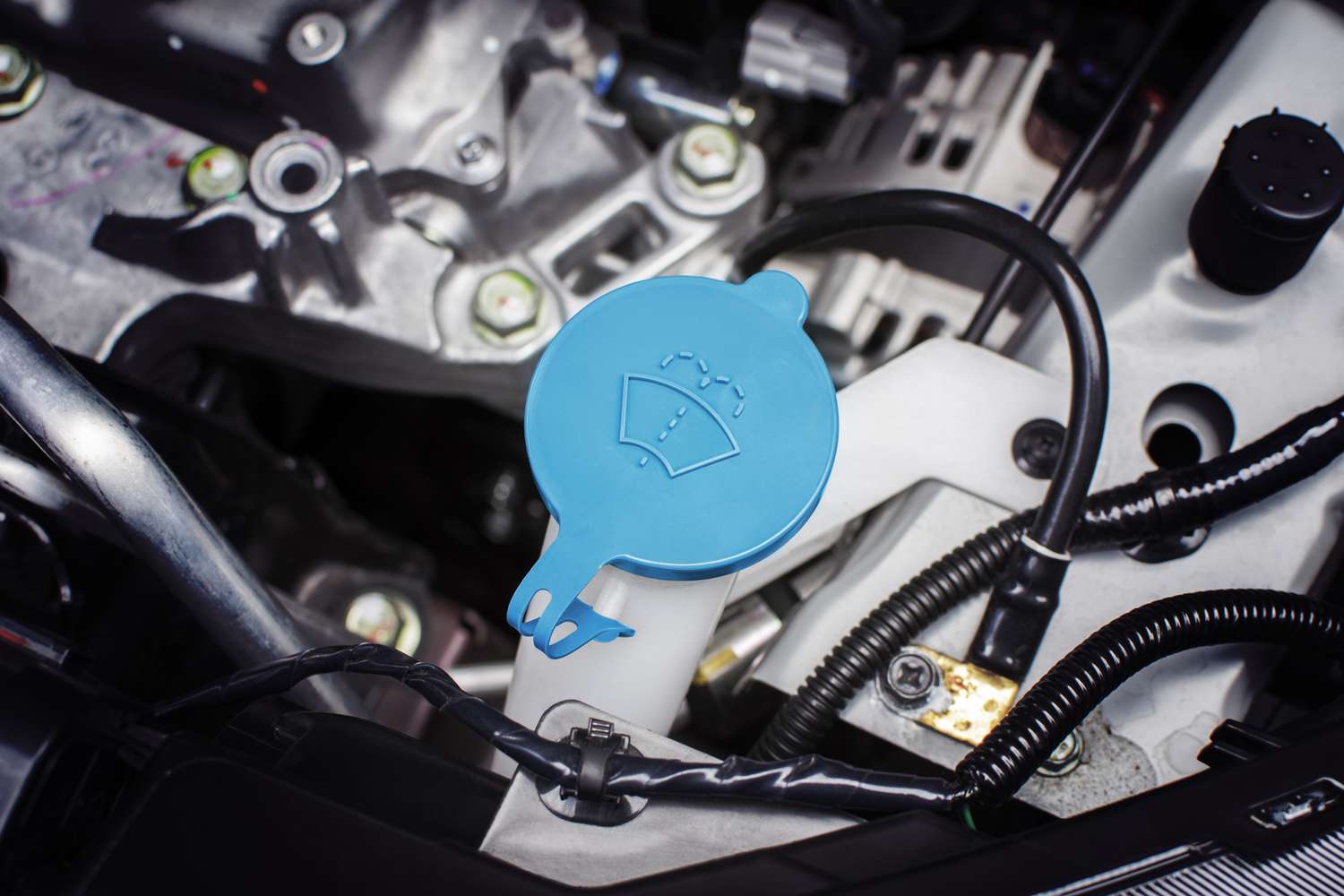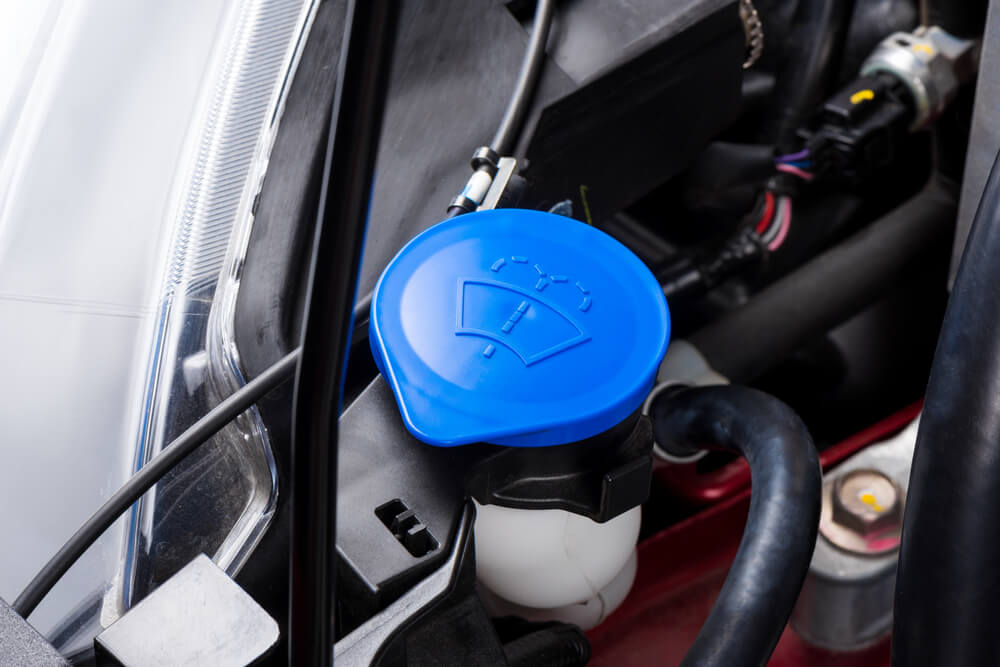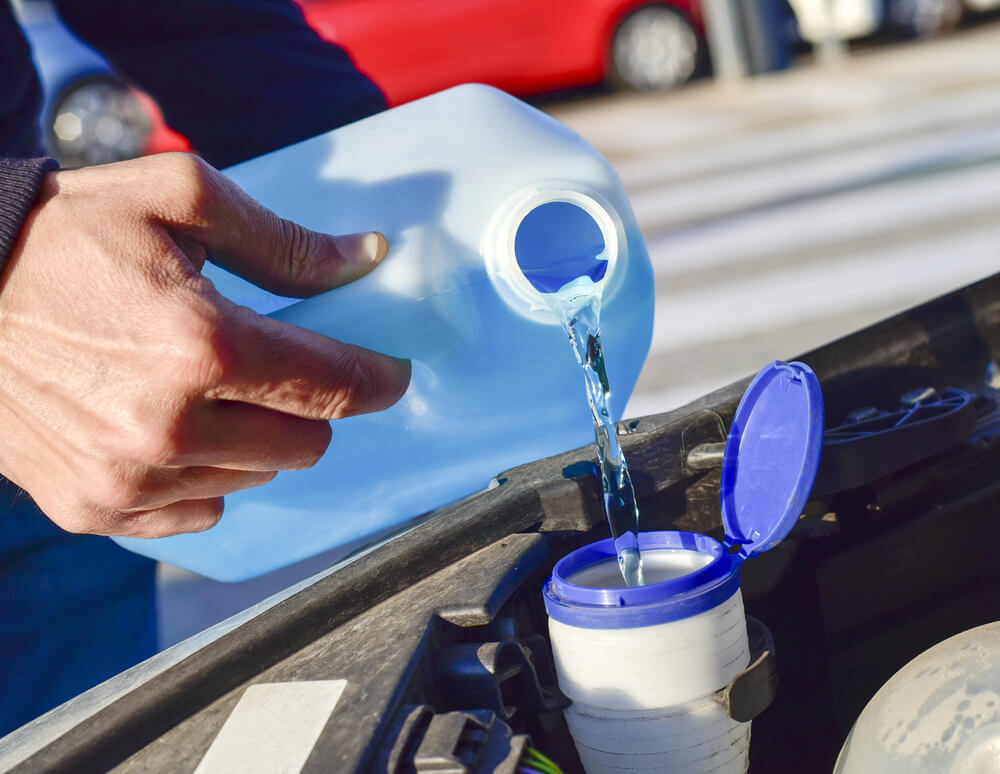Ensuring clear vision is paramount for safe driving. Your car’s windshield washer fluid plays a crucial role in maintaining a clean windshield, removing dirt, debris, and even bug splatter. This guide will walk you through the process of replenishing your washer fluid quickly and easily.

Gathering Supplies
Before you begin, gather the necessary tools for a hassle-free process.
-
Equipping Yourself for a Quick and Easy Process:
- Windshield Washer Fluid: Choose a pre-mixed washer fluid formulated for your climate. Winter blends often contain antifreeze to prevent freezing, while summer blends might have added bug repellent. Consult your car’s manual for specific recommendations.
- Funnel (Optional): A funnel helps prevent spills when pouring washer fluid into the reservoir.
- Paper Towels or Rag: Keep a paper towel or rag handy to wipe up any spills.
Finding the Hidden Reservoir: Locating the Washer Fluid Container
The washer fluid reservoir is typically a translucent plastic container located under the hood. However, its exact location can vary depending on your car model.
-
Unveiling the Secret Stash of Windshield Cleaning Solution:
- Consult your car’s owner’s manual: The manual will have a diagram or instructions specifically for your car, pinpointing the location of the washer fluid reservoir.
- Look for a windshield washer symbol: Many manufacturers include a windshield washer symbol on the reservoir cap itself. This symbol resembles a windshield with a spray nozzle.
- General location tip: In most cars, the washer fluid reservoir is positioned near the firewall, on the passenger side of the engine bay.

Unlocking the Reservoir: Opening the Washer Fluid Container
Once you’ve located the washer fluid reservoir, it’s time to open it for refilling.
-
Accessing the Hidden Chamber of Windshield Cleaning Power:
- Identify the cap: The reservoir cap will typically be a different color from the reservoir itself, often bright blue or yellow.
- Twist and lift: Most reservoir caps twist to unlock and then lift off completely. Some caps might simply pull straight up.
Replenishing the Reservoir: Adding Washer Fluid
Now that you’ve opened the reservoir, you can add fresh washer fluid.
-
Pouring in the Essential Windshield Cleaning Solution:
- Read the fill lines: The reservoir will usually have markings indicating the minimum and maximum fill levels. Don’t overfill!
- Use a funnel (optional): A funnel helps prevent spills and ensures the washer fluid goes directly into the reservoir.
- Pour slowly: Pour the washer fluid slowly and steadily to avoid overflowing the reservoir.
- Stop at the fill line: Once the fluid reaches the designated fill line, stop pouring.

Ensuring Adequate Supply: Checking the Washer Fluid Level
It’s always a good practice to double-check the fluid level after pouring.
-
Verifying the Reservoir’s Content for Clear Driving:
- Visually inspect the level: With the reservoir translucent, you can easily see the fluid level through the container.
- Top up if needed: If the fluid level is below the minimum fill line, add more washer fluid until it reaches the proper level.
Closing the Gateway: Replacing the Washer Fluid Cap
Once you’ve added sufficient washer fluid, it’s crucial to properly reseal the reservoir.
-
Securing the Washer Fluid Reservoir for Clear Driving:
- Tighten the cap securely: Twist the cap back on and ensure it’s fully tightened to prevent leaks.
- Check for leaks: After tightening the cap, check around the reservoir for any signs of leaks. If you see any leakage, retighten the cap or consult your car’s manual for troubleshooting steps.

Verifying Functionality: Testing the Windshield Wipers
Now that you’ve replenished the washer fluid, it’s wise to test the system to ensure everything is working properly.
-
Ensuring Effective Windshield Cleaning:
- Turn on the windshield wipers: Activate the windshield wiper function with the car turned on.
- Listen for the pump: You should hear the washer fluid pump activate as the wipers engage.
- Observe the spray pattern: Visually confirm that the washer fluid sprays onto the windshield and distributes evenly across the surface.
The Importance of Washer Fluid: Maintaining Clear Vision
Keeping your washer fluid topped up is a simple yet vital step for safe driving.
-
Ensuring Safe and Unobstructed Driving:
-
-
that can obscure your vision, especially during bad weather conditions like rain, snow, or sleet.
-
Reduced wear and tear: A dirty windshield can lead to increased wear and tear on your wiper blades. The abrasive dirt can scratch the wiper blade rubber, reducing its effectiveness and potentially scratching your windshield. Clean wiper blades with fresh washer fluid ensure a smoother swipe and longer lifespan.
-
Year-round protection: Choose the appropriate washer fluid for your climate. Winter blends prevent freezing, while summer blends might contain bug repellent. Using the right formula ensures optimal performance throughout the year.

Additional Tips for Maintaining Your Washer Fluid System
Here are some extra pointers to keep your washer fluid system functioning flawlessly.
-
Regularly check the fluid level: Make it a habit to check your washer fluid level during routine car maintenance, such as when checking your tire pressure or oil level.
-
Replace the washer fluid periodically: Over time, washer fluid can degrade and lose its effectiveness. It’s recommended to replace the washer fluid every year or two, especially before winter.
-
Clean the windshield wiper nozzles: The tiny nozzles that spray the washer fluid onto the windshield can become clogged with debris. Use a needle or thin wire to gently clean the nozzles if you notice a weak or uneven spray pattern.
-
Avoid using homemade solutions: Refrain from using homemade concoctions like water and dish soap as washer fluid. These can damage the washer fluid system and leave streaks on your windshield.
By following these simple steps and maintaining your washer fluid system, you can ensure clear visibility and safe driving conditions on the road. Remember, a little preventive maintenance goes a long way!
-
- Keeping your washer fluid topped up is a quick and easy task that yields significant benefits. With a clean windshield and a properly functioning washer fluid system, you’ll be prepared to tackle any road conditions with confidence. So, next time you’re at the gas station or auto parts store, don’t forget to grab a bottle of washer fluid – your car (and your peace of mind) will thank you!
Leave a Reply